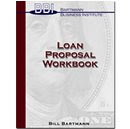Bill Bartmann says all businesses need money to operate. Borrowing money to start a business or expand your business is a skill all business owners need to be successful. When Bill Bartmann asks for a business loan, he knows that he must present a successful business and his personal experience and knowledge.
Here are some basic essentials you need to know about the business loan application process:
Qualify the Lender – Lenders are specialized; be sure the institution you are considering applying to is the right one for your needs. All lending institutions have rules and guidelines including amount they will loan (minimum and maximum), the industries they will loan to and geographic areas where they make loans.
Lenders want to Loan Money – Even in lean times, lenders want to make loans; this is how they make money. Don’t let anyone tell you ‘banks don’t have the money’ just because they were denied a loan.
Competition – You are competing with other people who are also asking for loans; you want to get in front of them; show you are the better candidate for a business loan.
First Impression – The first person you talk to likely has the authority to deny your loan; however, they cannot approve it. Their job is to screen applicants early to avoid wasting the loan committee’s time. You must make a good impression on this person.
Multi-Step Process – Be aware that borrowing money is a process; do not expect to walk in, apply and interview, and walk out with a check the same day.
The 4 P’s – Punctual – Keep your appointment; do not arrive very early or late; respect their time. Professional – look and dress the part. Prepared – Have your loan proposal with you for the loan committee’s benefit. Prompt – If your appointment is to last 10 minutes, do not go over. The less time spent with the first person you talk to, the less chance you have of making a mistake by saying the wrong thing. You don’t know this person; avoid small talk, be brief, get to the point and wrap it up in 10 minutes.
Call Ahead – Don’t waste your time or the lender’s time; make sure the lender you are making an appointment with is one who can do business with you. Tell them who you are, how much you need to borrow, the industry you’re in and the area you’re located in. Some lenders can only do very large loans; some are specialized in funding specific industries; some only work in certain geographic areas.
Always Make Application in Writing – Remember, the first person you speak to can say no, but they most likely cannot say yes. They will, however, be conveying your information to those on the loan committee. To avoid errors in relaying verbal information, always give them your written loan proposal; this is what the loan committee really needs in order to decide if you will be approved.
Your presentation determines your success in getting the lending institution to loan you the capital you need for your business. It is important that you show them that you are serious about your business and that you know what you are getting into. A well written loan proposal, with your business plan, will show the lender what you need, why you need it and that you are able to pay it back with a return.
Bill Bartmann has borrowed $3.1 Million dollars in 120 transactions from 180 lenders to fund businesses. He has never used any of his own money for business. Bill Bartmann covers all the essentials to borrowing money for your business, in great detail, in his online course, Billionaire Business Systems.
Bill Bartmann’s Business Plan on a Napkin
14 years ago

